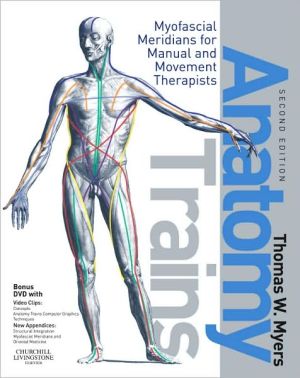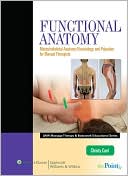The Muscular System Manual: The Skeletal Muscles of the Human Body
The Muscular System Manual by Dr. Joseph E. Muscolino makes the study of musculoskeletal anatomy easier and more engaging with a highly visual approach! This innovative, vibrantly illustrated atlas details the muscles and bones of the human body with unrivaled clarity and helps you build the strong anatomic understanding needed for success in practice.\ • A full-color, student-friendly design with special icons that direct you to the CD and Evolve site, and checkboxes that help you to keep...
Search in google:
A full-color atlas of the muscles of the human body, this text provides in-depth coverage of skeletal muscles. An easy-to-understand format organizes the material by body region, moving from head to extremities. For each region, there is an overview of the muscles of the region as a whole, with information on how muscles in that region function together and large drawings of the muscles of that entire region. Then each particular muscle in that region is described with name, the origin of that name, Greek and Latin derivations, pronunciation, attachments, actions, a drawing with an arrow showing the muscle's line of pull, innervation to two levels of detail, and arterial supply to two levels of detail. That overview is followed by a practical, step-by-step guide to palpating that muscle, a group muscle illustration to show the muscle's anatomical relationship to nearby muscles, the methodology for learning muscle actions, and clinically useful information for that muscle. Instructor's resources available.• A choice of level of depth for each muscle makes this text very teacher-friendly and suitable for a variety of disciplines from massage to chiropractic — bold type represents the beginning level and plain type shows more in-depth levels. • Content is organized by body region in an easy-to-understand format. • Clear, full-color line drawings examine each muscle, both in groups and individually. • Layout is compartmentalized, with each muscle displayed in a separate section. • More than 100 pages of appendices help to explain concepts and put anatomy into perspective, showing the "big picture." • Palpation and methodology sections explain each muscle, so students don't have to simply memorize the material, they learn it — with bulleted steps for palpating the muscle, a group muscle illustration to show the muscle's anatomical relationship to the other muscles in the region, a key to the illustration to indicate the names of each muscle shown, bulleted information on the anatomical relationship of the muscle to other muscles in that region, methodology for learning muscle actions to explain the reasoning behind each action, and a section of miscellaneous information about the muscle.• Four-color design enhances visual appeal, and illustrations show muscles and their attachments in two distinct colors for easy identification.
PART 1: The Musculoskeletal SystemBasic Kinesiology Terminology The Skeletal System How Muscles Function PART 2: The Skeletal Muscles of the Upper ExtremityMuscles of the Shoulder Girdle Joints Muscles of the Glenohumeral Joint Muscles of the Elbow and Radioulnar Joints Muscles of the Wrist Joint Extrinsic Muscles of the Finger Joints Intrinsic Muscles of the Finger Joints PART 3: The Skeletal Muscles of the Axial BodyMuscles of the Spinal JointsMuscles of the Rib Cage Joints Muscles of the Temporomandibular Joints Muscles of Facial Expression PART 4: The Skeletal Muscles of the Lower ExtremityMuscles of the Hip Joint Muscles of the Knee Joint Muscles of the Ankle and Subtalar Joints Extrinsic Muscles of the Toe Joints Intrinsic Muscles of the Toe Joints PART 5: Functional Mover Groups of Muscles19. Functional Mover Groups of MusclesBibliographyIndex







